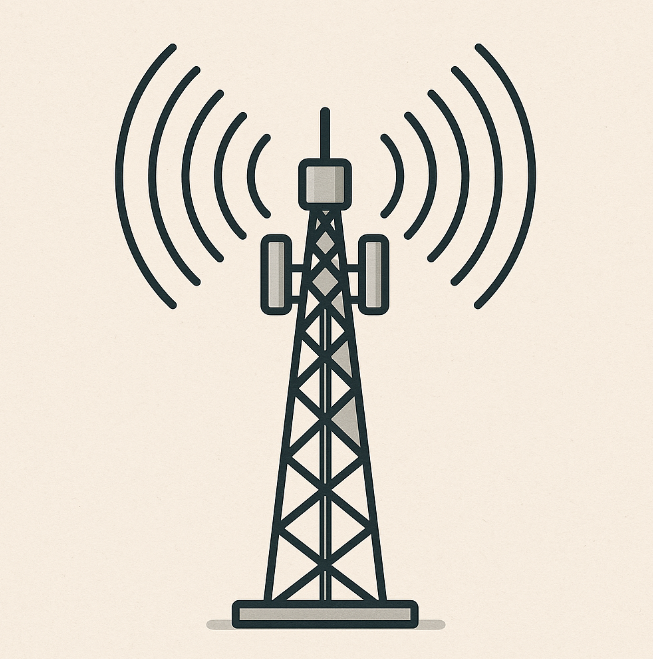
Can Everyday Wireless Signals Really Damage Your DNA?
I’ll be honest–> this one knocked my socks off.
For decades, we’ve lived in an increasingly wireless world—mobile phones in our pockets, Wi-Fi in our homes, Bluetooth in our cars. These technologies make modern life hum, but could the same invisible waves connecting us be subtly damaging our DNA?
A massive new scoping review of over 500 studies says the question is no longer fringe—it’s urgent. Researchers mapped every in vitro, in vivo, and epidemiological study they could find on radiofrequency electromagnetic fields (RF-EMF) and genotoxicity (DNA damage). Their goal? Identify patterns, gaps, and real-world implications. The findings aren’t all comfortable reading.
The Scope: From Lab Cells to Living Communities
The review covered RF-EMF exposures from 3 kilohertz to 300 gigahertz—exactly the range used by everything from mobile phones to Wi-Fi routers. The team included studies on:
- In vitro (cells in dishes)
- In vivo (animals, including humans)
- Epidemiological (real-world human exposures)
The researchers looked at all major DNA damage types—single and double-strand breaks, chromosome aberrations, oxidative stress, micronuclei formation—and tracked how factors like exposure duration, frequency, signal type, and funding source shaped results.
The Headline Finding: DNA Damage Happens, Often Below Safety Limits
Across all 517 studies, 59% found statistically significant DNA damage. The patterns were telling:
- In vivo and epidemiological studies: 75% found damage
- In vitro studies: 45% found damage
- 58% of positive studies reported effects at exposure levels below the International Commission of Non-Ionizing Radiation Protection (ICNIRP) public safety limits
That last point matters—a lot. It means effects were happening at intensities regulators currently consider safe.
Why Lab Dishes Underestimate the Risk
One of the most striking contrasts was between in vitro and in vivo results. Isolated cells in dishes often showed no effects, while studies in living organisms consistently found damage.
Why? Living systems have immune, endocrine, and nervous systems—interconnected networks that influence how cells respond to stress. A dish of cells doesn’t replicate blood flow, hormonal signaling, or metabolic activity. As the authors put it, in vitro models may understate risks because they strip away the complexity of life.
The DNA Damage “Fingerprint”
Some damage types stood out as especially sensitive to RF-EMF exposure:
- DNA base damage: Found in 86% of studies, and in every single epidemiological study measuring it
- Chromosome aberrations: Found in 63% of studies
- Micronuclei induction: Found in 54%
Many of these are biomarkers for genomic instability, a key step toward cancer.
The Smoking Gun Mechanism: Oxidative Stress
The most consistently implicated mechanism was free radical production (oxidative stress). Over 80% of studies measuring oxidative stress markers found effects. When DNA bases oxidize—especially forming molecules like 8-oxo-dG—it increases mutation risk and is linked to cancer, neurodegenerative disease, and aging.
A Complicated Dose–Response Story
If you’re picturing a simple “more exposure = more damage” curve, think again. The review found U-shaped dose–response patterns for both exposure intensity and duration:
- Very low and very high intensities often showed more effects than moderate intensities
- Short bursts (<15 min) and long exposures (>96 hours) showed more effects than mid-range durations
This suggests cells may mount short-term protective responses, but those defenses can be overwhelmed by either very brief, intense hits or long-term chronic exposure.
Real-World Signals Are Riskier
When studies used actual devices—like a smartphone in “talk” mode—DNA damage findings were more common than when researchers used simulated signals. GSM talk-mode, UMTS, and Wi-Fi signals all showed higher damage rates with real-world modulation patterns. Variable, intermittent exposures (similar to real device use) also caused more damage than constant signals.
Funding Source Bias Is Real
One of the most politically charged findings was that industry-funded studies were significantly less likely to find DNA damage than independently funded studies—even when study quality was similar. The pattern echoes other environmental health controversies, from tobacco to leaded gasoline.
So, What Does This Mean for Public Health?
The authors stop short of saying RF-EMF causes cancer, but they are clear: there is consistent evidence that it can damage DNA under real-world conditions, including at levels regulators currently permit. Given DNA damage is a well-established pathway to cancer, they recommend precautionary measures alongside current thermal-based safety guidelines.
For public health professionals, this means:
- Research priorities: More in vivo and long-term epidemiological studies, especially on under-studied frequencies like 5G bands
- Policy updates: Consider non-thermal effects and real-world exposure patterns in safety standards
- Public advice: Encourage lower-exposure habits without fear-mongering—like using speakerphone, limiting call duration, and keeping devices off the body when possible
What’s Next?
The evidence map is a starting point for a higher-quality systematic review. Future work will need to untangle:
- How exactly oxidative stress from RF-EMF leads to specific DNA lesions
- Why certain tissues (like reproductive and brain cells) are more vulnerable
- How chronic low-level exposures over decades influence cancer incidence
Join the Conversation
- Do you think current wireless safety standards adequately protect against non-thermal effects?
- What would precautionary measures look like in your community?
- If real-world signals are riskier, should device testing change?



